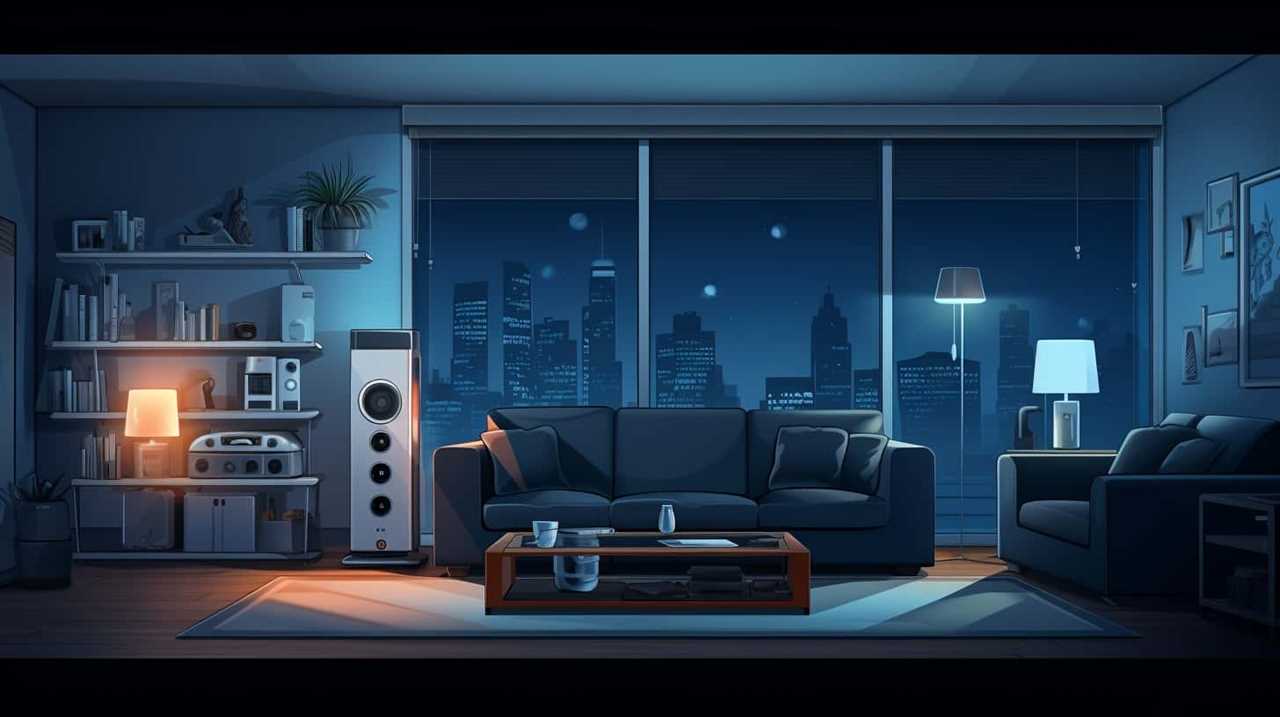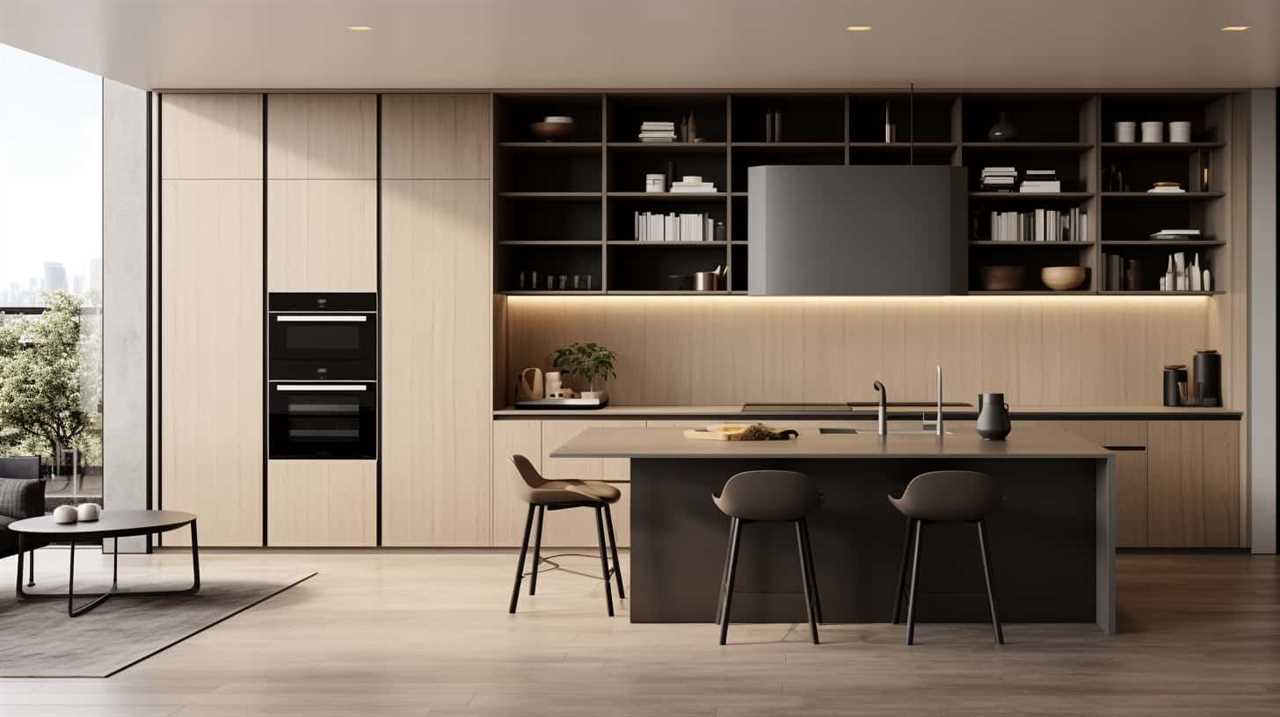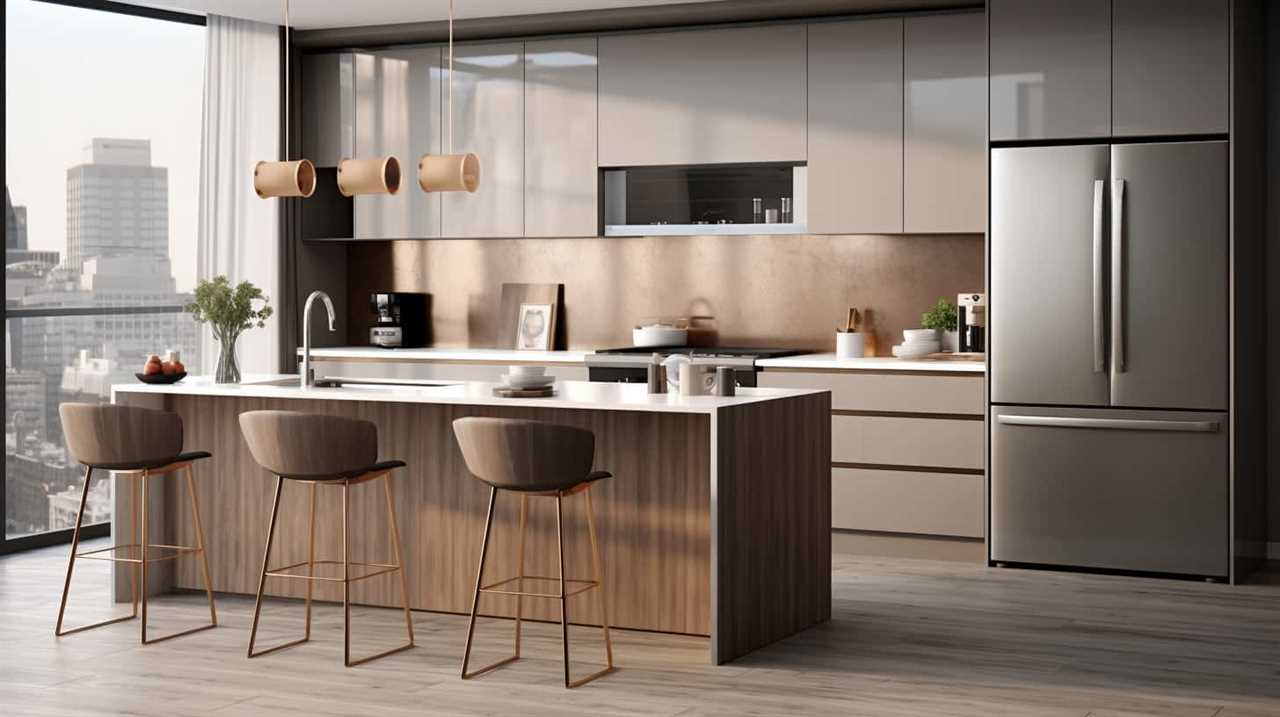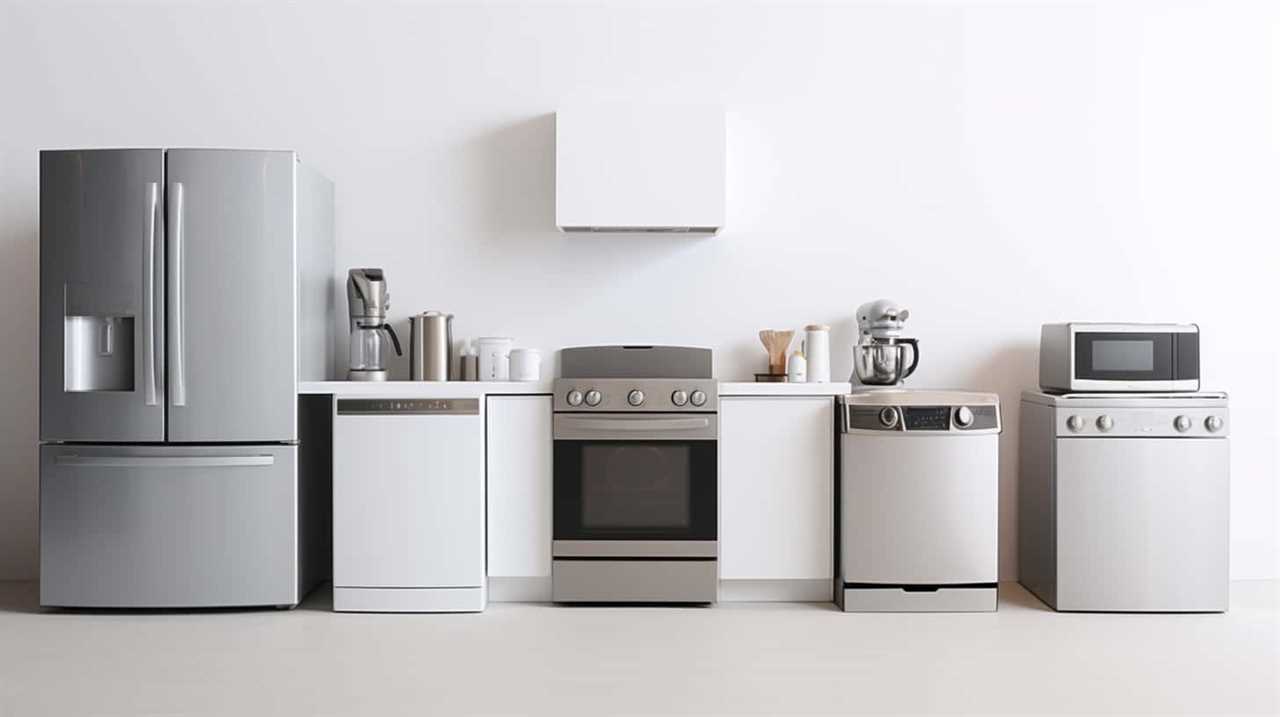We have all been guilty of leaving appliances on standby, but does it actually consume electricity? The answer might shock you.
In this article, we delve into the myth surrounding standby power consumption and uncover the hidden energy drain. By understanding the factors affecting standby power usage, you can make informed decisions to minimize its impact on your electricity bill.
Get ready to master the art of reducing standby power and saving energy.
Key Takeaways
- Standby power refers to the energy consumed by electronic devices when they’re plugged in but not in use.
- Standby power can account for a significant portion of overall energy usage.
- Leaving appliances on standby mode does use some power, but the amount is minimal.
- Unplugging appliances when not in use or using power strips with timers can help reduce energy waste.
Understanding Standby Power Usage
In our daily lives, we often overlook the fact that leaving appliances on standby does consume electricity. Understanding standby power usage is crucial in our quest for energy efficiency.

Standby power refers to the energy consumed by electronic devices when they’re plugged in but not in use. This ‘phantom’ power consumption can account for a significant portion of our overall energy usage.
To address this issue, standby power reduction techniques and standby power monitoring systems have been developed. Standby power reduction involves minimizing the power used by appliances in standby mode through various methods, such as using power strips or purchasing energy-efficient devices.
Standby power monitoring systems, on the other hand, allow us to measure and track the standby power consumption of our appliances.
By understanding and implementing these techniques, we can take control of our energy usage and reduce unnecessary standby power consumption.

Now, let’s debunk the myth of power consumption in standby mode.
The Myth of Power Consumption in Standby Mode
Many people believe that leaving appliances on standby mode consumes a significant amount of electricity. However, this is a myth that needs to be debunked.
The truth is, while appliances in standby mode do use some power, the amount is minimal and unlikely to make a noticeable impact on your energy bill.
Standby Mode Power
Sometimes we overlook the fact that appliances in standby mode still consume power. Standby power, also known as vampire power, refers to the electricity used by devices when they aren’t in use but still plugged in. It’s estimated that standby power can account for up to 10% of a household’s electricity consumption.

However, there’s a common myth that standby power is insignificant and doesn’t contribute significantly to energy usage. This misconception has led to the development of standby power management techniques and initiatives aimed at reducing standby power consumption.
These include implementing power-saving features in appliances, such as automatic shutdown or sleep modes, and using smart power strips that cut off power to devices when not in use. By being aware of the power consumed by appliances in standby mode and taking steps to reduce it, we can make significant strides in energy conservation.
Energy Waste or Savings
We can continue the discussion from the previous subtopic by addressing the misconception that appliances in standby mode don’t significantly contribute to energy usage.
It’s important to understand that even in standby mode, appliances consume a small amount of electricity. While individually, the energy consumption may seem negligible, the cumulative impact of leaving multiple appliances on standby can be significant.

Developing energy-saving habits, such as unplugging appliances when not in use or using power strips with built-in timers, can help reduce energy waste. By doing so, we not only save on electricity bills but also contribute to the preservation of the environment.
Taking small steps towards reducing standby power consumption can have a positive impact on our overall energy consumption and help create a sustainable future.
Standby Mode Misconceptions
Standby mode is often falsely believed to result in negligible power consumption. However, a closer analysis of standby power consumption reveals that this misconception isn’t entirely accurate.
While appliances in standby mode do consume less energy compared to when they’re fully operational, they still draw a significant amount of power. This is because appliances in standby mode continue to perform certain functions, such as maintaining a connection to the network or receiving remote control signals.

Furthermore, some appliances, such as televisions and gaming consoles, have higher standby power consumption due to their complex circuitry and always-on features.
Therefore, it’s important to consider the energy efficiency of appliances in standby mode and take steps to minimize their power consumption, such as using power strips with built-in timers or completely turning off appliances when not in use.
Uncovering the Hidden Energy Drain
The hidden energy drain can be revealed by examining the electricity consumption of appliances left on standby. While there are misconceptions surrounding standby mode and its impact on energy usage, it is important to understand the true extent of the hidden energy drain. To illustrate this, let’s consider a comparison of common household appliances and their standby power consumption:
| Appliance | Standby Power Consumption |
|---|---|
| Television | 1-5 watts |
| Computer | 1-3 watts |
| Game console | 1-5 watts |
| DVD player | 1-2 watts |
As the table shows, even though individual appliance standby power consumption may seem low, it can add up significantly over time. This hidden energy drain can account for a substantial portion of residential energy usage. By being aware of these energy vampires and taking steps to minimize standby power consumption, we can make a significant impact in reducing our overall energy usage and contribute to a more sustainable future.

Factors Affecting Standby Power Consumption
Factors that can affect standby power consumption include the age and efficiency of the appliances. Older appliances tend to consume more standby power than newer, energy-efficient ones. This is because older appliances weren’t designed with standby power reduction techniques in mind.
In contrast, newer appliances are equipped with features such as power-saving modes, sleep timers, and automatic shutdowns to reduce standby power. Additionally, the overall efficiency of the appliance can also impact standby power consumption. More efficient appliances are designed to minimize energy loss, even during standby mode.
Therefore, if you want to reduce standby power consumption in your household, consider upgrading your appliances to newer, more energy-efficient models. These advancements in technology can significantly decrease the amount of electricity wasted in standby mode.
The Real Impact on Your Electricity Bill
We frequently underestimate the impact of leaving appliances on standby mode on our electricity bill. Calculating standby power costs can help us understand the true financial burden.

Standby power refers to the electricity consumed by devices when they’re plugged in but not in use. Even though individual standby power usage may seem insignificant, the cumulative effect of multiple appliances adds up over time.
By monitoring and reducing standby power usage, we can significantly reduce our electricity bills. Additionally, the environmental impact of standby power usage can’t be ignored. The unnecessary electricity consumption contributes to greenhouse gas emissions and exacerbates climate change.
Therefore, it’s crucial to be mindful of the appliances we leave on standby and take steps to minimize their usage.
Tips for Minimizing Standby Power Usage
When it comes to minimizing standby power usage, there are a few key points to keep in mind.

First, unplugging appliances when not in use is a simple and effective way to save energy.
Additionally, investing in smart power strips can help eliminate standby power by cutting off electricity to multiple devices at once.
Lastly, opting for energy-efficient standby options, such as low-power mode or sleep mode, can also help reduce unnecessary power consumption.
Unplugging Saves Energy
One simple way to save energy and minimize standby power usage is by unplugging appliances when not in use. This is one of the most effective energy-saving techniques and power-saving strategies that can be easily implemented in our daily lives.

When appliances are plugged in, even when turned off, they continue to consume a small amount of electricity known as standby power or vampire power. Unplugging these appliances completely eliminates this standby power consumption.
By unplugging devices such as televisions, computers, chargers, and kitchen appliances when they aren’t being used, we can significantly reduce our overall energy usage and save money on our electricity bills.
Additionally, it’s important to note that power strips with on/off switches can also be used to conveniently turn off multiple appliances at once, further minimizing standby power usage.
Smart Power Strips
To continue our discussion on minimizing standby power usage, let’s delve into the benefits of using smart power strips. These innovative devices provide smart power management solutions that help reduce energy consumption. Here are four key advantages of using smart power strips:

- Individual Outlet Control: Smart power strips allow you to control each outlet individually, giving you the ability to turn off power to specific devices when they aren’t being used.
- Automatic Shut-Off: Some smart power strips have built-in sensors that can detect when devices are in standby mode or not in use. They automatically shut off power to those devices, preventing unnecessary energy consumption.
- Timed Scheduling: With smart power strips, you can set specific schedules for when certain devices should be turned on or off. This feature ensures that devices are only using power when needed.
- Remote Access: Many smart power strips can be controlled through mobile apps or connected to smart home systems. This allows you to monitor and manage your devices remotely, even when you’re away from home.
Energy-Efficient Standby Options
Using energy-efficient standby options is a great way to minimize standby power usage. By opting for energy saving alternatives, we can reduce the amount of electricity consumed by appliances on standby mode.
One effective option is to use power strips with built-in timers or occupancy sensors. These power strips automatically cut off power to connected devices when they aren’t in use or when the room is empty.
Another option is to choose appliances that have a low standby power consumption. Look for products with the Energy Star label, which indicates that they meet strict energy efficiency guidelines.
Additionally, manually switching off appliances when they aren’t in use can significantly reduce standby power consumption.

Frequently Asked Questions
Can Leaving Appliances on Standby Mode Cause Any Damage to the Devices?
Leaving appliances on standby mode can potentially cause damage to the devices. However, it is more important to consider the potential energy savings and environmental impact of reducing standby power consumption.
How Much Standby Power Do Appliances Typically Consume?
Standby power consumption varies by region. To reduce it, unplug appliances when not in use or use smart power strips. Also, consider energy-efficient devices and enable power-saving modes.
Are Certain Types of Appliances More Energy-Efficient Than Others When in Standby Mode?
Certain types of appliances consume more energy in standby mode than others. Energy-saving tips include unplugging devices when not in use and using power strips to easily turn off multiple appliances at once. Standby power consumption statistics can help guide smart energy usage.
Does the Age of an Appliance Impact Its Standby Power Consumption?
The age of an appliance can affect its standby power consumption. Understanding this impact can help us make energy-saving choices and reduce our electricity bills. Here are some tips for reducing standby power consumption.

Can Using Power Strips With Surge Protectors Help Reduce Standby Power Usage?
Using power strips with surge protectors is an effective energy-saving strategy to reduce standby power usage. This can have a significant impact on electricity bills. It is important to be conscious of the appliances left on standby to minimize unnecessary electricity consumption.
Conclusion
In conclusion, leaving appliances on standby does use electricity, contrary to popular belief. In fact, standby power consumption can account for up to 10% of a household’s energy usage.
This means that even when appliances aren’t in use, they’re still drawing power and contributing to electricity bills.
To minimize standby power usage, it’s recommended to unplug devices or use power strips with on/off switches.











